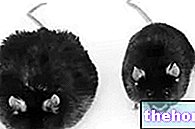For many, if not for all gym practitioners, the achievement of the set goals is closely linked to the training schedule, as if the instructor were, with his mastery, the sole architect of the results obtained.In reality this is not the case; if any other training protocol is not accompanied by other factors such as a more correct diet, and I would like to emphasize that by nutrition it does not mean only eating but also drinking, if the right training and rest times are not respected, intended as recovery physical and regular sleep, then your card may have been made by the best personal trainers in the world but the results will hardly come.

By metabolism we mean the set of chemical, physical and biological transformations that are carried out in the organism to allow the development of vital processes. It is distinguished specifically into two distinct phases: anabolism and catabolism.
The assimilation is the anabolic and constructive phase, which takes the name of anabolism; this phase consists of the continuous transformation of food into organic matter or into substances that can subsequently be burned to produce energy. The second phase, catabolism is combustion of these substances, their chemical degradation and their removal from the organism through the excretion of urine, sweat and through the pulmonary ventilation which leads to the elimination of carbon dioxide.
In youth the anabolic phase prevails over the catabolic one and there is "growth; in old age the catabolic phase prevails and in mature age there is, or at least there should be, a balance between the two phases." The various transformations and chemical reactions that make up the metabolism are in fact connected to numerous factors, just think that they are linked to the presence and intervention of at least 25,000 different enzymes (which are those discovered up to now but there are others to be discovered) and each of these can act only under specific conditions, which are for example the presence of catalysts that activate them or a certain pH value.
A normal metabolism ensures the constancy of the physico-chemical conditions of the components of the organism, ensuring that balance, which takes the name of homeostasis, given for example by the constancy of the chemical composition of the internal liquids (especially the blood) and by the maintenance temperature. Basal metabolic rate is the minimum amount of energy expended by an organism at rest and fasting to survive by keeping basic processes such as temperature retention, heart activity, respiration and chemical synthesis active.
The metabolism corresponds to the intensity of cellular respiration and is therefore correlated to the consumption of oxygen that can be quantified with a special equipment. Based on the consumption of oxygen and calculations that will take into account age, sex, lean body mass (the weight of muscles only ), the energy requirement of an individual is calculated for a "unit of time.
The metabolism is also heavily influenced by thyroid hormones.
Thyroid hormones stimulate metabolic activity in general, influencing morphogenesis and growth. In case of hypothyroidism there is an intense decrease in the basal metabolism and the symptoms are the lowering of body temperature, the decrease in blood pressure and the feeling of fatigue. In the case of hyperthyroidism there is a strong acceleration of the metabolism; hyperthyroid people are in fact very active, sleep little and are emotionally unstable.
Explained broadly the concept of metabolism is quite clear that behind its functioning there is the cause of the achievement or not of the set objectives. If we relate the metabolism to training in the gym, we discover that when we are training we are in the middle of the second of the two phases, the catabolic one; we are in fact degrading chemical substances whose waste will be expelled through sweat (which contrary to common thinking does not is a direct index of weight loss), urine and carbon dioxide with breathing: we are therefore burning energy, we are impoverishing our organism, in practice we are destroying and not building. When we have finished the training our organism will begin the phase of restoring the values and after we have nourished, the anabolic phase will take place, with the transformation of food into organic matter and into substances useful for restoring energy supplies. If adequate rest is then given before another workout then we will have the much sought after supercompensation, which is nothing more than the improvement of the values prior to the workout performed. For all these reasons it is important not to overdo the loads and training times (the ideal training is estimated around an hour or so) and it is equally important to give the right time gap between one workout and the next. Only in this way will we give our body the opportunity to "build" and improve itself, but this concept, which would seem to be aimed only at those seeking muscle growth, is instead valid for everyone, regardless of gender, age and set goals. Here and only here does the hand of the instructor take over, with different training protocols depending above all on the person, on his health needs and finally on the desired goals.
I conclude with a simple translation: Fitness means well-being, we instructors have the obligation to help people feel better than they were before they came to us and this not only in the presence of overt problems (which then everyone has the his problems), but even when there are none at the base. Anything that makes you feel better can be called a cure, even if there is no real starting point; it is for this reason that I have espoused the thesis that:
FITNESS IS NOT AN AESTHETIC MATTER BUT THERAPEUTIC.




























